WebLOAD Load Testing Tool Review 2025 – Features, Work Flow

Have you heard of the WebLOAD Load Testing Tool?
WebLOAD is a popular tool with both SMBs and larger enterprises for conducting extensive performance and load testing.
What is Load Testing
Load Testing is done to verify that a system/application can handle the expected number of transactions and to verify the system/application behavior under both normal and peak load conditions (no. of users).
It is a subset of Performance Testing and is a type of non-functional testing.
Check our Load Testing Tutorial to learn more
Why Load Testing
Load testing is important because it answers some key performance questions and gives confidence in the system.
To identify whether the existing resources (infrastructure) which we have are sufficient or not to handle expected and peak load.
- Identifies the bottlenecks in the application
- To find how our system performs under a load
- Finds how many simultaneous users that an application can handle
- Identifies whether our application can scale
- To identify at what load our application may break
- Finds the maximum operating capacity of an application
- To simulate real user scenarios. In terms of how it will perform when hundreds, thousands, or even millions of users visit it in real-time.
- Saves money and generate revenue
What is WebLOAD
WebLOAD is a load testing tool from RadView, (a leading provider of application performance and load testing software which has been in the industry for over 20 years). It is an enterprise-grade load and performance testing tool which is designed for web applications. It supports over a hundred technologies from web protocols to enterprise applications and has built-in integration with Jenkins, Selenium, and many other tools to enable continuous load testing for DevOps.
It combines performance, scalability, and integrity as a single process for the verification of web and mobile applications. It can simulate hundreds of thousands of concurrent users making it possible to test large loads and report bottlenecks, constraints, and weak points within an application. The results of the tests are collected from the Load Machines and it can be viewed in real-time in a tabular or graphical format. It is compatible with operating systems like Microsoft Windows, and Linux.
WebLOAD Performance Testing Tool Features
Following are some of the most important features of WebLOAD
- WebLOAD can be run as an on-premise product or as a fully managed SaaS load testing solution.
- A set of predefined analysis reports provides performance data, helping users identify bottlenecks. Reports and analysis data can also be viewed remotely via a customizable Web Dashboard.
- It supports a wide range of web, mobile, and enterprise protocols and technologies.
- A powerful correlation engine recognizes both server-side and client-side dynamic values.
- Integrations let you use WebLOAD together with APM tools (Dynatrace, AppDynamics,
New Relic), open-source software (Selenium, Jenkins), mobile testing (Perfecto Mobile), and more. - Integration with Selenium allows us to integrate real web browsers that perform activity into our performance test scenarios and accurately identify issues.
- It allows you to incorporate your Continuous Delivery and Continuous Integration processes for faster and more efficient software deployment.
Protocols
WebLOAD supports a wide range of web, mobile, and enterprise protocols and technologies such as HTTP/HTTPS, HTTP/2, WebSocket, PUSH, AJAX, SOAP, HTML5, WebDAV, and many others.
WebLOAD Pricing
It offers pricing packages that are based on several parameters, such as:
- Generated load – the maximum number of concurrent virtual users.
- SaaS or on-premise – WebLOAD is offered as a fully-managed SaaS solution or as a self-managed on-premise software, with various options for generating load from the cloud.
- Subscription term – we offer yearly or monthly subscription options, with discounts for longer periods.
- Single or multi-tester environment.
Download Link: WebLOAD
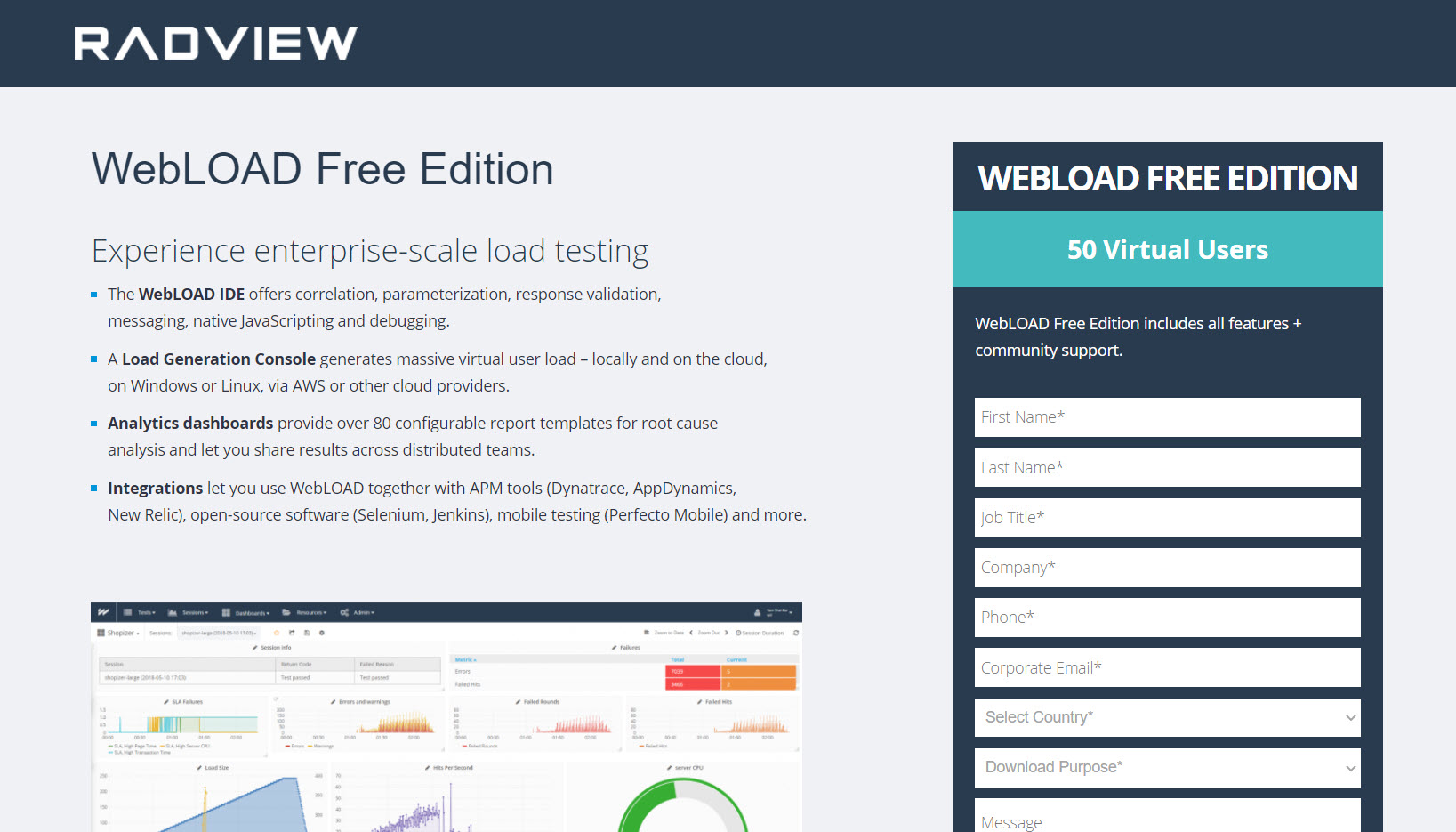
Note: WebLOAD free edition includes 50 virtual users with access to almost all of WebLOAD features
After you install WebLOAD, you can see a startup screen to launch WebLOAD Recorder, WebLOAD Console, and WebLOAD Analytics.
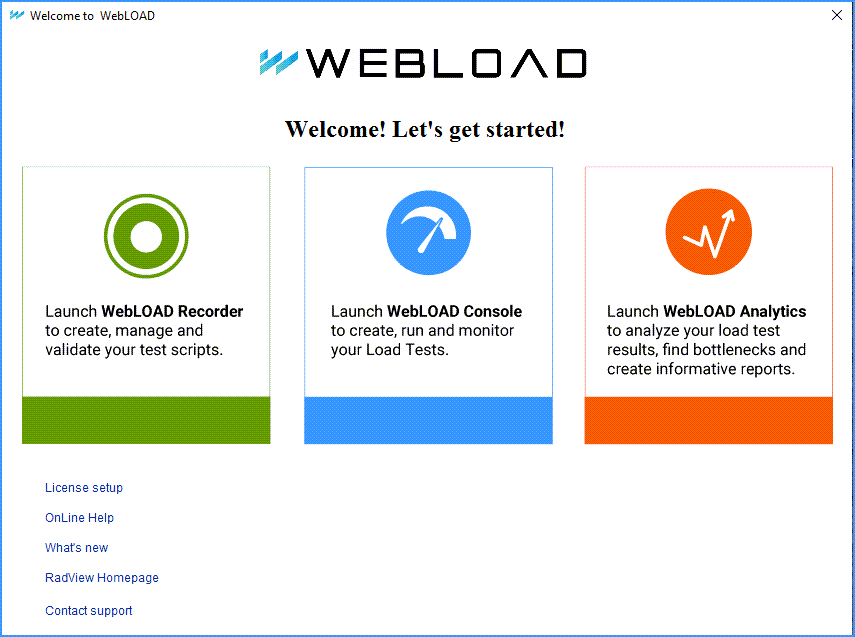
How Does WebLOAD Work
Let’s see how to use WebLOAD.
It generates Virtual Clients to test web applications. It simulates real-world loads to apply measurable & repeatable production workloads. Virtual Clients emulate the actions of human users by performing actions on a web application. It submits requests to the server and receives the response for every user action. To increase the load on the server, we have to increase the number of Virtual Clients.
The WebLOAD test process includes
- Test Planning
- Creating JavaScript-based Test Scripts (Agendas)
- Creating Load Templates
- Executing the Tests
- Analyzing the Test Results
WebLOAD Recorder
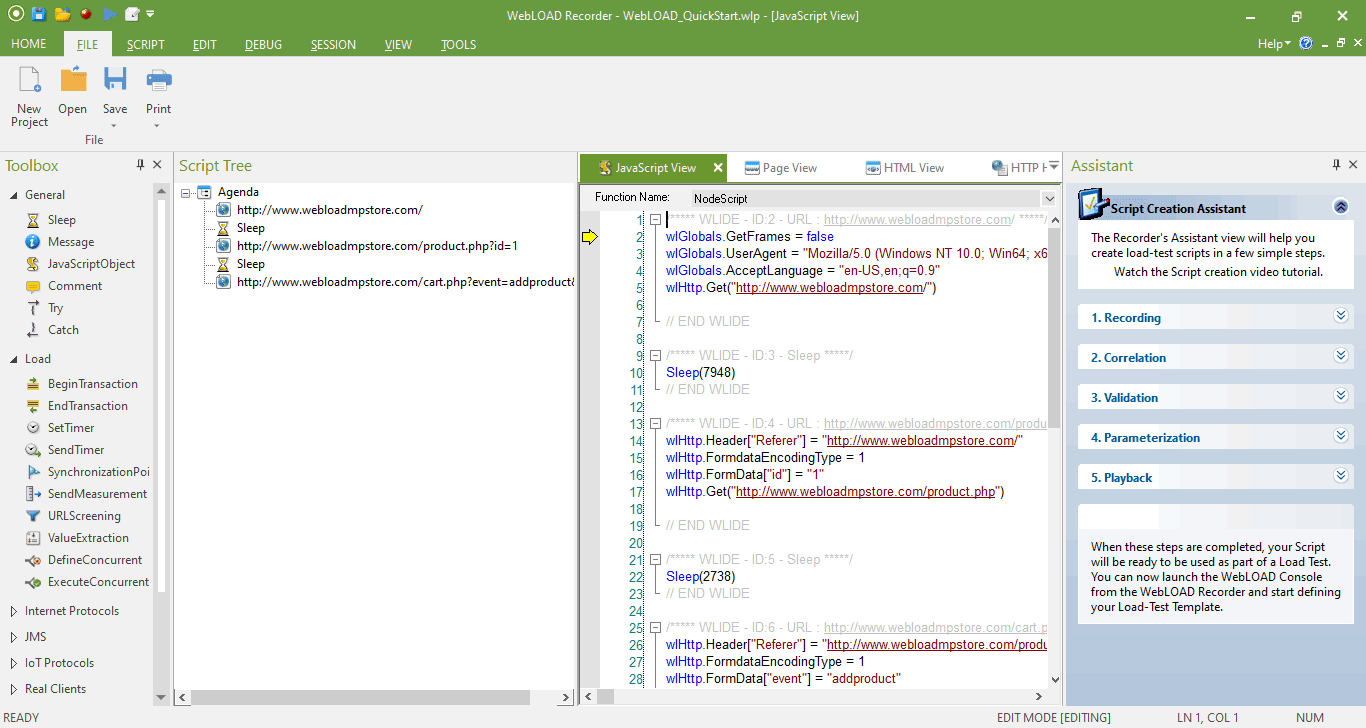
WebLOAD Recorder is used to create, manage, and validate your test scripts.
It is a visual environment for creating protocol test scripts (aka Agendas in WebLOAD) that provides features such as Recording, Editing, Running and Debugging Agendas.
Records our actions in a web browser and saves it as a JavaScript Agenda.
It has two editing modes such as Visual Editing mode and JavaScript Editing mode. These editing modes enable us to edit our JavaScript Agenda.
We can run and playback the Agendas. Once the Agenda is run, it returns response data from the Web server.
The Agenda can then be used in the WebLOAD environment to test the performance of our web application.
WebLOAD Console
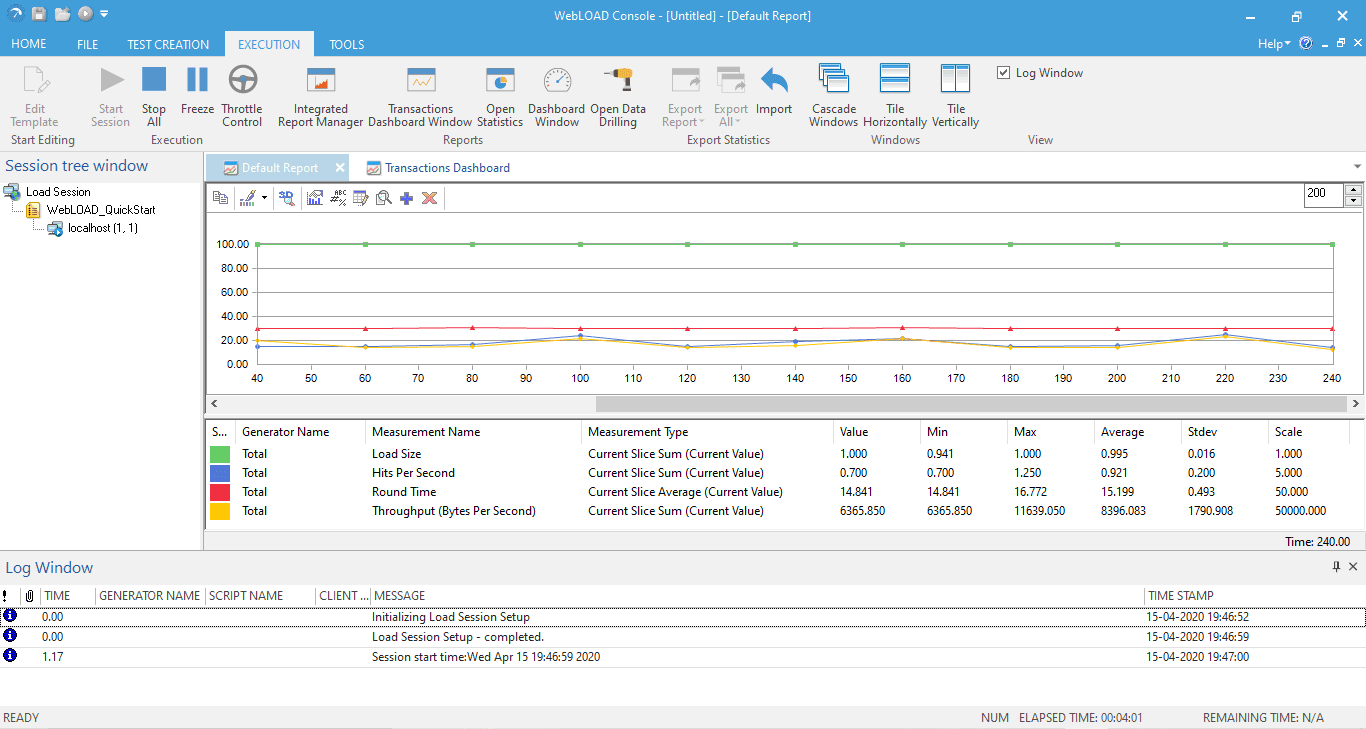
It is used to create, run, and monitor your Load Tests. We perform the majority of our load testing activities in the WebLOAD Console. It generates massive virtual user load locally and on the cloud, on Windows or Linux, via AWS or other cloud providers.
WebLOAD Analytics
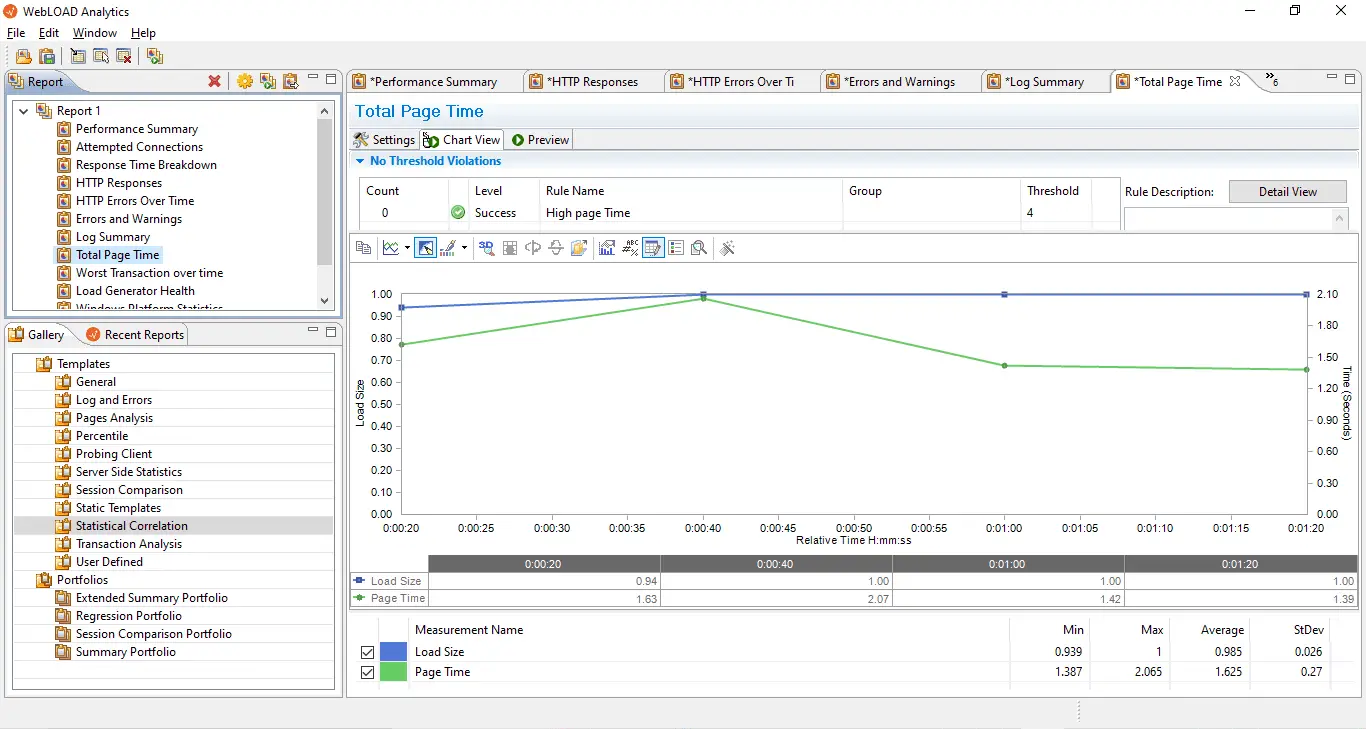
WebLOAD Analytics is used to analyze your load test results, find bottlenecks, and create informative reports. It has a user-friendly dashboard that provides over 80 configurable report templates to do root cause analysis. It also allows you to share the result across distributed teams.
Companies Rely on WebLOAD

AVG, intel, NASA, eBay, Symantec, Hanes, Harris, Sony Pictures, Digital River, United States Postal Service, and many more.
Documentation and Support
You can find extensive documentation in official site – Check this link
Conclusion:
Hopefully, this WebLOAD review helped you understand the full value of this load testing tool so you can decide if it addresses your specific needs. WebLOAD makes it incredibly easy for you to do load tests and fix performance bottlenecks.
FAQs
Which Tool Is Best For Load Testing?
There are many popular Load Testing tools in the market. Check our detailed post on 10 Best Load Testing Tools.
Related Posts:
- TestProject Automation Tool Review
- LambdaTest Cross Browser Testing Tool Review
- Test Lodge Test Management Tool Review
- Qase Test Case Management Tool Review






